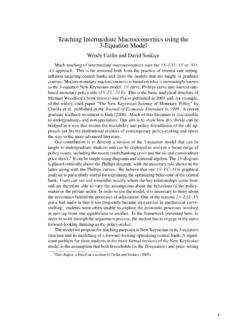Transcription of Nonhomogeneous Linear Equations - Stewart …
1 Nonhomogeneous Linear EquationsIn this section we learn how to solve second-order Nonhomogeneous Linear differential equa-tions with constant coefficients, that is, Equations of the formwhere , , and are constants and is a continuous function. The related homogeneousequationis called the complementary equationand plays an important role in the solution of theoriginal Nonhomogeneous equation (1).TheoremThe general solution of the Nonhomogeneous differential equation (1)can be written aswhere is a particular solution of Equation 1 and is the general solution of thecomplementary Equation we have to do is verify that if is any solution of Equation 1, then is asolution of the complementary Equation 2.
2 IndeedWe know from Additional Topics: Second-Order Linear Differential Equationshow tosolve the complementary equation. (Recall that the solution is , where and are linearly independent solutions of Equation 2.) Therefore, Theorem 3 says thatwe know the general solution of the Nonhomogeneous equation as soon as we know a par-ticular solution . There are two methods for finding a particular solution: The method ofundetermined coefficients is straightforward but works only for a restricted class of func-tions.
3 The method of variation of parameters works for every function but i0s usuallymore difficult to apply in Method of Undetermined CoefficientsWe first illustrate the method of undetermined coefficients for the equationwhere ) is a polynomial. It is reasonable to guess that there is a particular solution that is a polynomial of the same degree as because if is a polynomial, thenis also a polynomial. We therefore substitute a polynomial (of thesame degree as ) into the differential equation and determine the 1 Solve the equation.
4 SOLUTIONThe auxiliary equation of isr2 r 2 r 1 r 2 0y y 2y 0y y 2y x2 Gyp x ay by cyyGypG xay by cy G x GGypy2y1yc c1y1 c2y2 t x t x 0 ay by cy ayp byp cyp a y yp b y yp c y yp ay ayp by byp cy cypy ypyycypy x yp x yc x 3ay by cy 02 Gcbaay by cy G x 11with roots ,. So the solution of the complementary equation isSince is a polynomial of degree 2, we seek a particular solution of the formThen and so, substituting into the given differential equation, wehaveorPolynomials are equal when their coefficients are equal. ThusThe solution of this system of Equations isA particular solution is thereforeand, by Theorem 3, the general solution isIf (the right side of Equation 1) is of the form , where and are constants,then we take as a trial solution a function of the same form,, because thederivatives of are constant multiples of.
5 EXAMPLE 2 Solve .SOLUTIONThe auxiliary equation is with roots , so the solution of thecomplementary equation isFor a particular solution we try . Then and . Substi-tuting into the differential equation, we haveso and . Thus, a particular solution isand the general solution isIf is either or , then, because of the rules for differentiating thesine and cosine functions, we take as a trial particular solution a function of the form yp x Acos kx Bsin kxCsin kxCcos kxG x y x c1cos 2x c2sin 2x 113e3xyp x 113e3xA 11313Ae3x e3x9Ae3x 4 Ae3x e3xyp 9Ae3xyp 3Ae3xyp x Ae3xyc x c1cos 2x c2sin 2x 2ir2 4 0y 4y e3xekxekxyp x AekxkCCekxG x y yc yp c1ex c2e 2x 12x2 12x 34 yp x 12x2 12x 34C 34B 12A 122A B 2C 02A 2B 0 2A 1 2Ax2 2A 2B x 2A B 2C x2 2A 2Ax B 2 Ax2 Bx C x2yp 2 Ayp 2Ax Byp x Ax2 Bx CG x x2yc c1ex c2e 2x 2r 12 Nonhomogeneous Linear Equations Figure 1 shows four solutions of the
6 Differen-tial equation in Example 1 in terms of the particu-lar solution and the functions and .t x e 2xf x exyp Figure 2 shows solutions of the differentialequation in Example 2 in terms of and thefunctions and .Notice that all solutions approach as and all solutions resemble sine functions whenis t x sin 2xf x cos 2xypFIGURE 18_5_33ypyp+3gyp+2fyp+2f+3gFIGURE 24_2_42ypyp+gyp+fyp+f+gNONHOMOGENEOUS Linear Equations 3 EXAMPLE 3 Solve.
7 SOLUTIONWe try a particular solutionThenso substitution in the differential equation givesorThis is true ifThe solution of this system isso a particular solution isIn Example 1 we determined that the solution of the complementary equation is. Thus, the general solution of the given equation isIf is a product of functions of the preceding types, then we take the trial solu-tion to be a product of functions of the same type. For instance, in solving the differentialequationwe would tryIf is a sum of functions of these types, we use the easily verified principle of super-position,which says that if and are solutions ofrespectively, then is a solution ofEXAMPLE 4 Solve.
8 SOLUTIONThe auxiliary equation is with roots , so the solution of the com-plementary equation is . For the equation we tryThen ,, so substitution in the equationgivesor 3Ax 2A 3B ex xex Ax 2A B ex 4 Ax B ex xexyp1 Ax 2A B exyp1 Ax A B exyp1 x Ax B exy 4y xexyc x c1e2x c2e 2x 2r2 4 0y 4y xex cos 2xay by cy G1 x G2 x yp1 yp2ay by cy G2 x ay by cy G1 x yp2yp1G x yp x Ax B cos 3x Cx D sin 3xy 2y 4y xcos 3xG x y x c1ex c2e 2x 110 cos x 3sin x yc c1ex c2e 2xyp x 110 cos x 310 sin xB 310A 110 A 3B 1and 3A B 0 3A B cos x A 3B sin x sin x Acos x Bsin x Asin x Bcos x 2 Acos x Bsin x sin xyp Acos x Bsin xyp Asin x Bcos xyp x Acos x Bsin xy y 2y sin
9 X4 Nonhomogeneous Linear EQUATIONSThus,and , so ,, andFor the equation , we trySubstitution givesorTherefore,,, andBy the superposition principle, the general solution isFinally we note that the recommended trial solution sometimes turns out to be a solu-tion of the complementary equation and therefore can t be a solution of the nonhomoge-neous equation. In such cases we multiply the recommended trial solution by (or by if necessary) so that no term in is a solution of the complementary 5 Solve.
10 SOLUTIONThe auxiliary equation is with roots , so the solution of the com-plementary equation isOrdinarily, we would use the trial solutionbut we observe that it is a solution of the complementary equation, so instead we tryThenSubstitution in the differential equation givesso ,, andThe general solution isy x c1cos x c2sin x 12xcos x yp x 12xcos xB 0A 12yp yp 2 Asin x 2 Bcos x sin x yp x 2 Asin x Axcos x 2 Bcos x Bxsin x yp x Acos x Axsin x Bsin x Bxcos xyp x Axcos x Bxsin xyp x Acos x Bsin xyc x c1cos x c2sin x ir2 1 0y y sin xyp x x2xypy yc yp1 yp2 c1e2x c2e 2x (13x 29)ex 18 cos 2x yp2 x 18 cos 2x 8D 0 8C 1 8 Ccos 2x 8 Dsin 2x cos 2x 4 Ccos 2x 4 Dsin 2x 4 Ccos 2x Dsin 2x cos 2xyp2 x Ccos 2x Dsin 2xy 4y cos 2xyp1 x ( 13x 29)

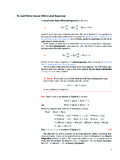


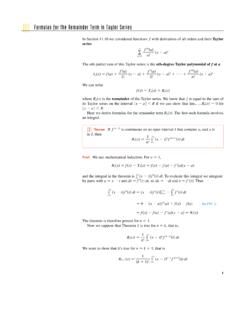


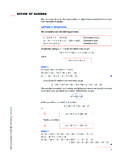
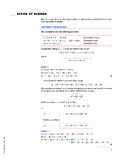

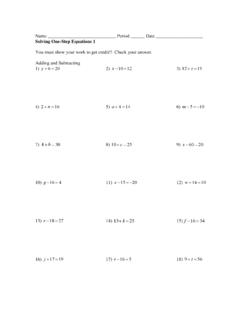
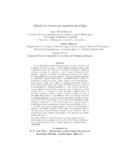
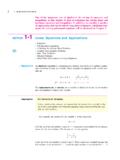
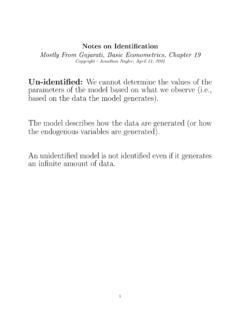
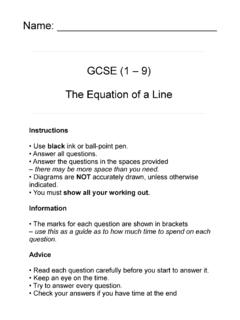
![SFPE Equation Sheet [KL 10-19-2015]](/cache/preview/c/f/3/c/2/1/e/4/thumb-cf3c21e48064d8fdafc6507dedc08886.jpg)
